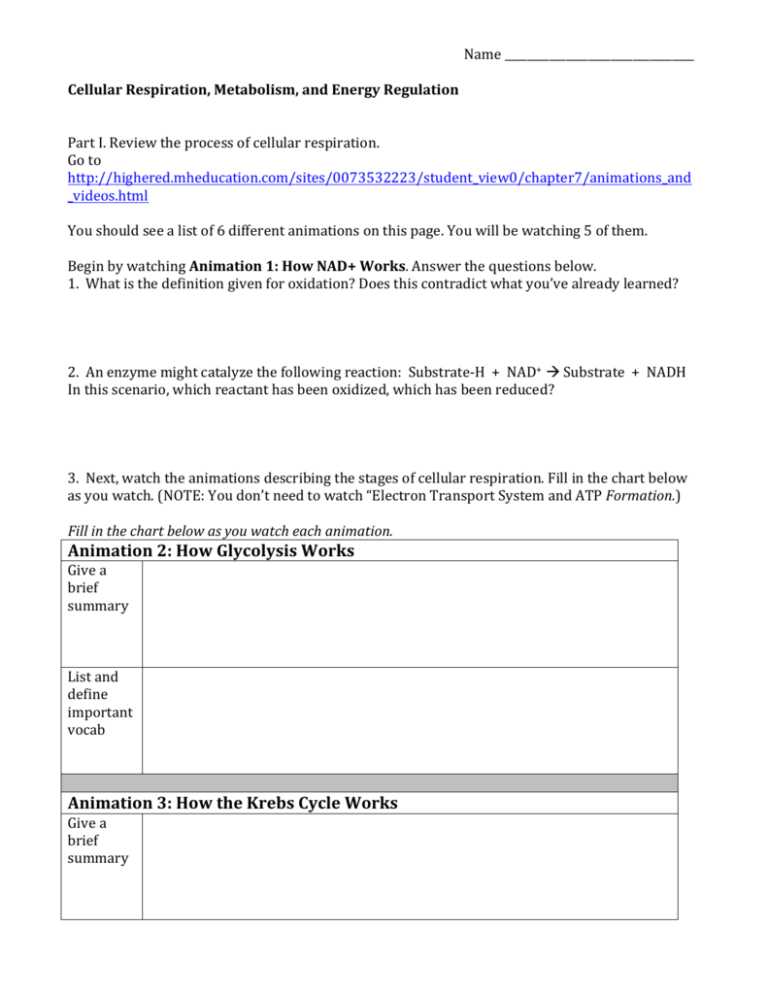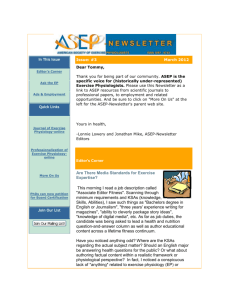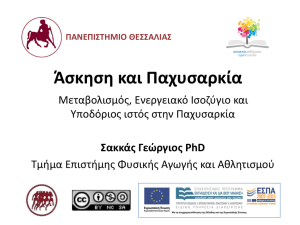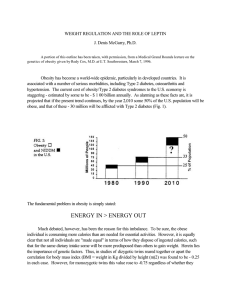Animation 2: How Glycolysis Works Animation 3: How the Krebs
advertisement

Name __________________________________ Cellular Respiration, Metabolism, and Energy Regulation Part I. Review the process of cellular respiration. Go to http://highered.mheducation.com/sites/0073532223/student_view0/chapter7/animations_and _videos.html You should see a list of 6 different animations on this page. You will be watching 5 of them. Begin by watching Animation 1: How NAD+ Works. Answer the questions below. 1. What is the definition given for oxidation? Does this contradict what you’ve already learned? 2. An enzyme might catalyze the following reaction: Substrate-­‐H + NAD+ à Substrate + NADH In this scenario, which reactant has been oxidized, which has been reduced? 3. Next, watch the animations describing the stages of cellular respiration. Fill in the chart below as you watch. (NOTE: You don’t need to watch “Electron Transport System and ATP Formation.) Fill in the chart below as you watch each animation. Animation 2: How Glycolysis Works Give a brief summary List and define important vocab Animation 3: How the Krebs Cycle Works Give a brief summary List and define important vocab Name __________________________________ (Skip Animation 4) Animation 5: Proton Pumps Give a brief summary List and define important vocab Answer 1. What role do proton pumps play in creating ATP? additional questions. Animation 6: Electron Transport System and ATP Synthesis Give a brief summary List and define important vocab Answer 1. Which two membrane-­‐bound structures are proton pumps? additional questions. 2. What role does oxygen play in the ETC? Finally, watch a 5-­‐minute video called 3-­‐d Animation – Cellular Respiration. This puts all the parts together to show the whole process, start to finish. Name __________________________________ Part II: Metabolism and Energy Regulation A. Leptin: How does your brain know when you need food? Leptin is a hormone produced by fat (adipose) cells that sends a signal to your brain. Watch this video, and then answer the questions that follow. https://www.youtube.com/watch?v=oN3woHJ7ZDY (first 6 minutes) 1. What does leptin tell your brain? 2. Explain the role of leptin in appetite stimulation. 3. What observation suggested to researchers that obesity is a genetic trait? One mouse in this picture is normal (“wild-­‐type”). The other mouse has a genetic mutation relating to leptin. 4. Which mouse has the leptin mutation? 5. Do you think this mouse’s mutation causes leptin levels that are chronically too high or too low? Explain your answer. B. How can your mitochondria keep you warm? (Aka Brown Fat and Mitochondrial Uncoupling) The first resource is a radio segment from NPR’s Science Friday. Listen to the first three minutes. https://www.youtube.com/watch?v=SpomxLvqVPw 6. What is brown fat? What purpose does it serve in newborn babies? Name __________________________________ 7. Why is brown fat brown, and why is white fat white/yellow? Watch the following video: https://www.youtube.com/watch?v=BHZhUbeI8FQ (Don’t stress! You don’t need to know all the details; try to get the main ideas from the video.) 8. What happens when the uncoupling protein is open? Which particles pass through the inner mitochondrial membrane? 9. The mitochondrial uncoupling protein results in less ATP being produced by the ETC. What type of energy is produced in large quantities? 10. What does uncoupling have to do with brown fat? Be specific. (Check out http://en.wikipedia.org/wiki/Brown_adipose_tissue#Function for the answer.)











